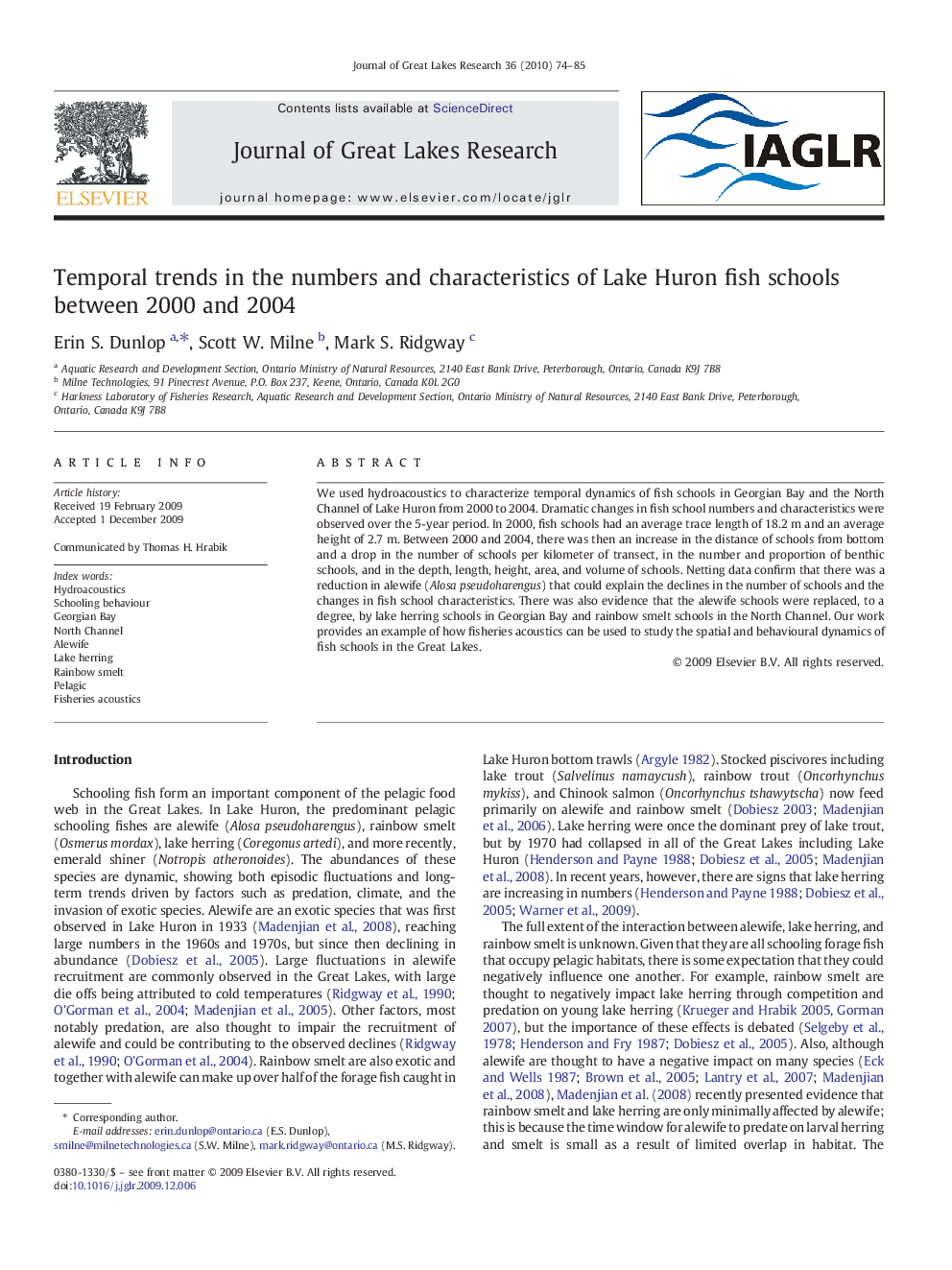| Article ID | Journal | Published Year | Pages | File Type |
|---|---|---|---|---|
| 4399045 | Journal of Great Lakes Research | 2010 | 12 Pages |
Abstract
We used hydroacoustics to characterize temporal dynamics of fish schools in Georgian Bay and the North Channel of Lake Huron from 2000 to 2004. Dramatic changes in fish school numbers and characteristics were observed over the 5-year period. In 2000, fish schools had an average trace length of 18.2Â m and an average height of 2.7 m. Between 2000 and 2004, there was then an increase in the distance of schools from bottom and a drop in the number of schools per kilometer of transect, in the number and proportion of benthic schools, and in the depth, length, height, area, and volume of schools. Netting data confirm that there was a reduction in alewife (Alosa pseudoharengus) that could explain the declines in the number of schools and the changes in fish school characteristics. There was also evidence that the alewife schools were replaced, to a degree, by lake herring schools in Georgian Bay and rainbow smelt schools in the North Channel. Our work provides an example of how fisheries acoustics can be used to study the spatial and behavioural dynamics of fish schools in the Great Lakes.
Keywords
Related Topics
Physical Sciences and Engineering
Earth and Planetary Sciences
Earth and Planetary Sciences (General)
Authors
Erin S. Dunlop, Scott W. Milne, Mark S. Ridgway,
